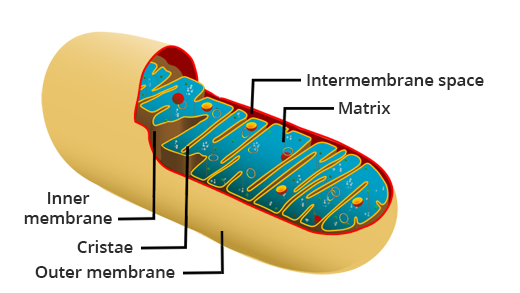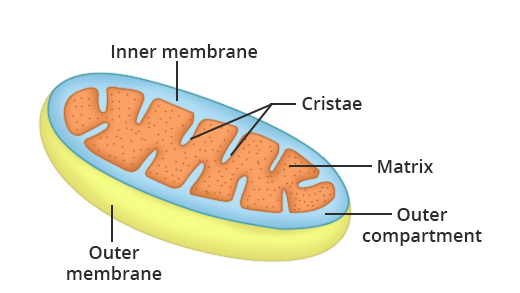Mitochondria
Our parents and teachers have always told us to eat well to get energy and stay healthy. Have you ever wondered how the food we eat gets converted to energy?
Mitochondria play a major role in breaking down nutrients and generating energy-rich molecules for the cell. A small molecule called Adenosine Triphosphate (ATP) stores the chemical energy produced by the mitochondria.
Let us learn more about these ‘Power Factories’ of the cell.
What are Mitochondria?
Mitochondria, also known as the powerhouse of the cell, are double-membrane-bound organelles found in most eukaryotic organisms, that are responsible for breaking down and converting oxygen and nutrients into a usable form of energy for the cell.
Physiologist ‘Albert von Kolliker’ first discovered it in 1857. Later in the year 1898, Carl Benda coined the term mitochondria.
The functions of mitochondria started coming to light only after half a century since its discovery. Let us see what these functions are.
Functions of Mitochondria:
- Mitochondria convert simple particles of nutrients into energy charged particles.
- These charged particles combine with oxygen to produce molecules of Adenosine Triphosphate (ATP). This process is called ‘oxidative phosphorylation’.
- Mitochondria present in the cells of the liver have enzymes that detoxify ammonia.
- They also assist in developing certain components of blood and hormones like oestrogen and testosterone.
- Mitochondria help the cell in maintaining the right concentration of calcium ions within the compartments of the cell.
- When a cell ages, it is essential for the cell to be destroyed and cleared to make way for the new cells. Mitochondria help to decide which cell has to be destroyed.
- Cytochrome C released by the mitochondria activates caspase, one of the chief enzymes involved in the destroying of a cell.
Note: If a mitochondrion dysfunctions and leads to an abnormal death of cells, the function of the respective organ can be affected.
Structure of a Mitochondrion:

- Outer Membrane – It contains proteins called porins. These proteins allow the movement of ions in and out of the mitochondrion. It also consists of enzymes involved in the elongation of fatty acids and the oxidation of adrenaline.
- Intermembrane Space – It is the space between the inner membrane and the outer membrane. It consists of the small particles that the outer membrane is permeable to, such as ions and sugars.
- Inner Membrane – It is made up of proteins and has enzymes that are necessary for the production of Adenosine Triphosphate (ATP). This membrane is pervious to oxygen, carbon dioxide, and water which are essential for the conversion of nutrients to energy, to generate ATP.
- Cristae – The inner membrane has several folds to increase its surface area, called cristae. These are essential for the efficient production of ATP. A lot of chemical reactions occur on the surface of the cristae.
- Matrix – It is the fluidic space inside the inner membrane. It consists of proteins, ribosomes, tRNA, enzymes, and genomic DNA. The enzymes in the matrix play a major role in the synthesis of ATP. These enzymes aid the most important chemical cycles.
How to draw the diagram of a mitochondrion (Easy Steps)?
Here is a simple diagram of a Mitochondrion, followed by videos of how to draw it (Step by step).

– Dhanyajeeth K
